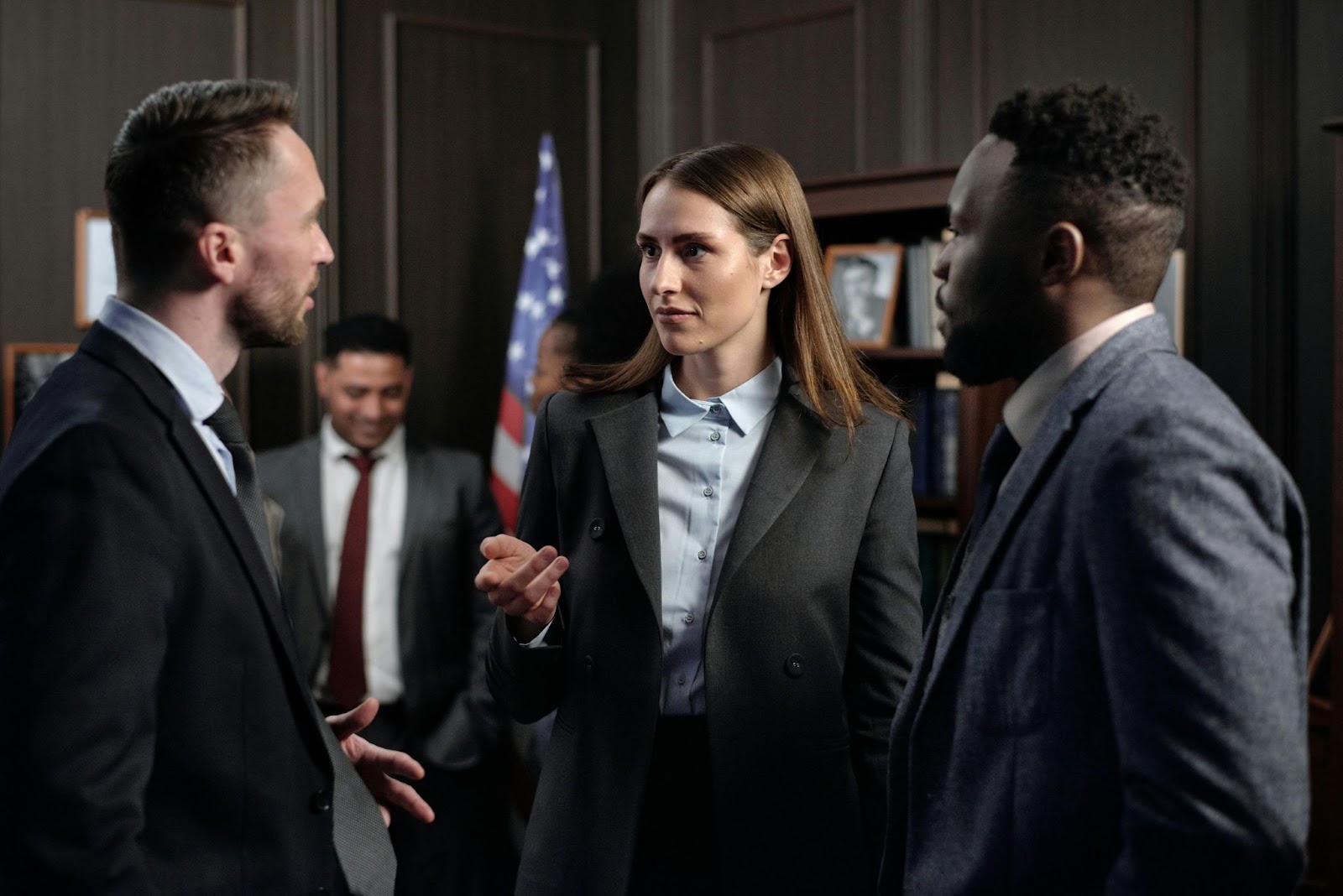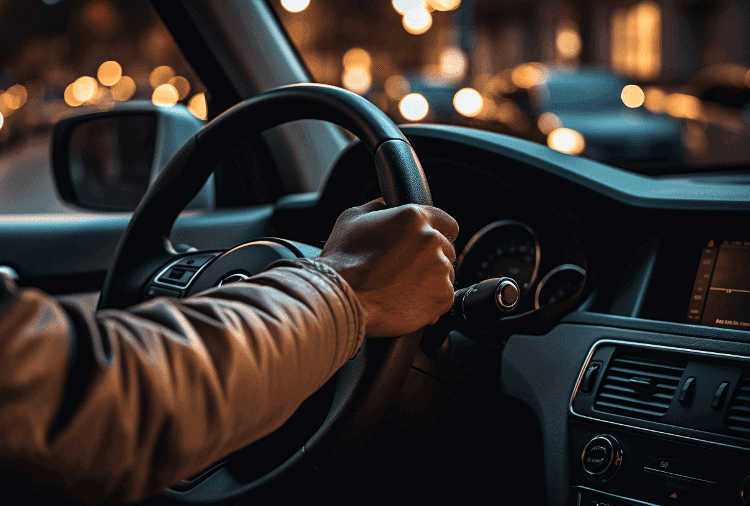Navigating the aftermath of an accident with an uninsured motorist in New York presents a unique set of challenges for victims seeking compensation. Personal injury lawyers play an essential role in guiding clients through the intricate legal landscape, offering expertise that is vital for understanding options like uninsured motorist coverage. While these cases can be complex, requiring skillful negotiation and strategic litigation, the potential for financial recovery remains a significant concern. What specific tactics do these legal professionals employ to overcome the hurdles posed by uninsured drivers, and how do they guarantee their clients are adequately protected?
Contents
Understanding Uninsured Motorist Coverage
Uninsured motorist coverage is an essential component of auto insurance policies designed to protect drivers against financial losses stemming from accidents involving uninsured or underinsured drivers. This type of coverage provides a vital safety net when an at-fault driver lacks sufficient insurance to cover the damages incurred. In many jurisdictions, the prevalence of uninsured drivers poses a significant risk, making uninsured motorist coverage an integral aspect of responsible financial planning for vehicle owners.
The coverage functions by compensating for damages that would otherwise be unrecoverable due to the absence or inadequacy of the at-fault party’s insurance. Policyholders can typically choose their coverage limits, which dictate the maximum amount an insurance company will pay in the event of a claim. These policy limits should be carefully considered, as they directly impact the level of financial protection available.
Common Challenges in Uninsured Cases
Maneuvering the intricacies of uninsured motorist cases often presents a multitude of challenges for both policyholders and legal professionals. One primary concern is the identification and confirmation of uninsured drivers. Given the high number of uninsured motorists, verifying the lack of insurance coverage can be an intimidating task. This process often involves intricate investigations and thorough communication with various parties, including insurance companies, to guarantee that the driver is indeed uninsured.
Liability issues further complicate these cases. Establishing fault in an accident involving an uninsured driver can be complex, primarily because these drivers may lack assets or sufficient coverage to compensate the injured party. The absence of adequate coverage places a heavier burden on the victim’s insurance policy, often leading to disputes over coverage limits and compensation amounts.
Additionally, uninsured cases frequently face delays due to the need for extensive documentation and the potential for contested claims. Legal professionals must navigate these challenges with precision, guaranteeing that all evidence is meticulously compiled and presented. This process is vital in advocating for fair compensation for affected clients while dealing with the inherent complexities of uninsured motorist claims. Each case requires a tailored approach to overcome these multifaceted challenges effectively.
Legal Rights of Accident Victims
Accident victims possess specific legal rights that enable them to seek compensation for their losses, which may include medical expenses, lost wages, and pain and suffering. Understanding the range of compensation options available is vital, as it can influence the decision to pursue settlements or proceed with litigation. Filing a legal claim involves a systematic process that requires adherence to procedural rules, underscoring the importance of informed legal representation to navigate these complexities effectively.
Compensation Options Available
When individuals are involved in accidents, a variety of compensation options may be available to them, contingent upon the specifics of their case. The compensation types generally encompass economic and non-economic damages. Economic damages aim to reimburse victims for quantifiable financial losses, such as medical expenses, lost wages, and property damage. Non-economic damages, on the other hand, compensate for more subjective losses like pain and suffering, emotional distress, and loss of enjoyment of life. These compensation types serve as vital legal remedies, aiming to restore victims to their pre-accident condition as much as possible.
For victims involved in accidents with uninsured motorists, the pursuit of these compensations can become complex. Legal remedies may include accessing uninsured motorist coverage, which is a provision within many auto insurance policies designed to cover expenses when an at-fault driver lacks insurance. Additionally, victims may explore personal injury protection (PIP) benefits, depending on their policy and jurisdiction. Moreover, if the uninsured motorist possesses assets, pursuing a civil lawsuit remains a potential avenue for compensation. Understanding the range of legal remedies available is essential for victims to effectively navigate their options and secure the rightful compensation they deserve.
Filing a Legal Claim
Steering the aftermath of an accident often involves understanding the legal rights available to victims, particularly when seeking compensation through a legal claim. In cases involving uninsured motorists, victims must navigate a complex legal landscape to secure rightful compensation. A vital aspect of this process is adherence to filing deadlines. New York law imposes specific time constraints, typically a three-year statute of limitations for personal injury claims. Failing to file within these deadlines can result in the forfeiture of the right to pursue legal action, underscoring the importance of timely action.
Equally important is the preparation and submission of proper legal documentation. This includes compiling evidence such as police reports, medical records, and any witness statements that substantiate the claim. Legal documentation serves as the backbone of the case, providing necessary proof of the accident’s circumstances and the extent of injuries sustained. Engaging with a knowledgeable personal injury lawyer can aid in accurately assembling these documents, ensuring compliance with legal standards and enhancing the likelihood of a favorable outcome. By understanding these elements, accident victims can effectively navigate their legal rights and pursue the compensation they deserve when facing uninsured motorists.
Steps to Take After an Accident
In the aftermath of an accident, taking immediate and systematic actions is essential to safeguard your legal rights and health. The first step is to contact law enforcement to guarantee an official report is filed, followed by gathering important accident details, such as photographs and witness information. Prompt medical attention is also critical, not only for addressing potential injuries but also for documenting them in case of future legal proceedings.
Contact Law Enforcement Immediately
In the aftermath of an accident, contacting law enforcement promptly is a critical step that can greatly impact the subsequent legal proceedings and insurance claims. This action guarantees that the incident is officially recorded through standardized reporting procedures. When law enforcement arrives on the scene, they will initiate an investigation, gathering essential information, and creating a thorough police report. This police documentation serves as an authoritative record of the accident, detailing the involved parties, the vehicles, and any apparent damages or injuries.
Engaging law enforcement provides an unbiased third-party account of the incident, which can be pivotal in legal disputes, especially when dealing with uninsured motorists. The police report is often a key piece of evidence that personal injury lawyers rely on when building a case. It can corroborate witness statements and provide an objective basis for determining fault. Additionally, insurance companies frequently use this documentation to assess claims, making it indispensable for pursuing compensation.
Gather Essential Accident Details
Following an accident, it is essential to systematically gather key details to confirm a thorough record of the event. This process is significant, especially when dealing with uninsured motorists, as extensive documentation can notably impact the outcome of any ensuing legal proceedings. The initial step involves documenting the accident scene meticulously. Capture photographs of the vehicles involved, including license plates, damage points, and any environmental factors like road conditions or traffic signs that might have contributed to the incident. Such visual evidence can provide an objective basis for understanding the circumstances surrounding the accident.
Additionally, gather witness statements from any individuals who observed the incident. Eyewitness accounts can offer valuable perspectives and corroborate the details of the accident. When collecting these statements, make sure that they are as detailed as possible, encompassing the time, location, and any specific observations related to the event. It is also prudent to record contact information for each witness, facilitating further communication if necessary.
Thoroughly gathering these key accident details forms a foundation upon which a personal injury lawyer can build a compelling case. This proactive approach can be instrumental in maneuvering through the complexities of legal claims involving uninsured motorists.
Seek Medical Attention Promptly
One essential step after an accident is to seek medical attention promptly, regardless of the perceived severity of injuries. Immediate medical evaluation is imperative not only for health reasons but also for legal purposes, especially when dealing with uninsured motorists. A timely injury assessment can identify latent injuries that might not be immediately apparent, such as concussions or internal injuries, which could worsen if left untreated. By obtaining a professional medical evaluation, individuals can guarantee their health is properly managed and documented.
Moreover, a thorough medical follow up is essential for establishing a clear link between the accident and the injuries sustained. Medical records serve as critical evidence in personal injury claims, providing a documented timeline of when injuries were first reported and treated. This documentation is indispensable in situations where the at-fault driver is uninsured, as it bolsters the credibility of the claim made against their insurance or through other compensation avenues.
How Lawyers Investigate Claims
When personal injury lawyers undertake the task of investigating claims, they commence a meticulous process that involves gathering and analyzing evidence to build a robust case. Employing advanced investigation techniques, these lawyers meticulously reconstruct the incident by collecting pertinent evidence, which forms the backbone of their legal strategy. Evidence collection begins with obtaining police reports, medical records, and eyewitness statements, providing a foundational understanding of the event. Lawyers then seek out additional supporting documents such as photographs of the accident scene and vehicle damage assessments, ensuring a thorough view of the circumstances.
For further legal assistance, especially in cases requiring detailed scrutiny of accident scenes or complex negotiations with insurers, the expertise of the Law Office of Cohen & Jaffe proves invaluable. This firm is renowned for its strategic approach to tackling challenging cases, often involving uninsured motorist scenarios.
In the context of uninsured motorist cases, personal injury lawyers often explore deeper to uncover hidden assets or alternative coverage options, such as umbrella policies, that may be available to satisfy compensation needs. They may also collaborate with accident reconstruction experts who use scientific methods to analyze factors like vehicle speed and impact angles, lending credence to the case’s validity.
Moreover, digital forensics plays an essential role, as data from surveillance cameras and mobile devices can offer indisputable insights into the accident dynamics. These efforts culminate in a detailed, evidence-backed claim that positions the client for favorable outcomes in negotiations or court proceedings.
Negotiating With Insurance Companies
After meticulously gathering evidence to construct a compelling case, personal injury lawyers turn their attention to negotiating with insurance companies on behalf of their clients. This phase is critical, as it involves maneuvering through complex insurance tactics designed to minimize payouts. Insurance companies often employ strategies such as disputing liability, undermining the severity of injuries, and delaying settlements to pressure claimants into accepting lower offers. Personal injury lawyers must be adept at claim negotiation to counter these tactics effectively.
Claim negotiation begins with a thorough understanding of the insurance policy and the extent of coverage available. Lawyers must present a well-documented claim that highlights the evidence of negligence and the resulting damages. This documentation includes medical records, witness statements, and expert testimony to substantiate the claim’s validity. By anticipating common insurance tactics, lawyers can preemptively address potential objections, thereby strengthening their position.
Furthermore, personal injury lawyers often engage in strategic discussions with insurance adjusters, emphasizing the client’s right to fair compensation. This requires a balance of assertiveness and diplomacy, ensuring that negotiations remain productive. Ultimately, successful negotiation can result in a settlement that adequately compensates the client, avoiding the need for prolonged litigation.
Pursuing Compensation Through Litigation
In situations where negotiation fails to yield a satisfactory settlement, pursuing compensation through litigation becomes a necessary course of action. This step involves a formal legal process where the personal injury lawyer must effectively employ litigation strategies to advocate for their client’s rights. A detailed approach is essential to build a persuasive case, starting with gathering substantial evidence, identifying witnesses, and crafting a compelling narrative that aligns with legal standards. These strategies are significant to achieving a favorable outcome when dealing with uninsured motorists.
Understanding courtroom procedures is integral for personal injury lawyers maneuvering this complex landscape. The litigation process typically begins with filing a complaint, followed by the discovery phase where both parties exchange pertinent information. Pre-trial motions may be filed to address any legal issues before the trial commences. During the trial, presenting evidence and examining witnesses are key components that require meticulous preparation and execution. The lawyer’s ability to effectively communicate arguments and respond to opposing counsel is essential.
Ultimately, the goal of pursuing litigation is to secure just compensation for the client. The legal process, while often lengthy and complex, provides a structured avenue for resolving disputes when other methods fall short.
Frequently Asked Questions
What Is the Average Settlement for Uninsured Motorist Accidents in New York?
The average payouts for uninsured motorist accidents in New York vary considerably due to claim factors such as injury severity, medical expenses, and lost wages. Typically, settlements range widely, influenced by each case’s specific circumstances and complexities.
How Long Do I Have to File a Claim Against an Uninsured Driver?
In New York, claim deadlines for filing against an uninsured driver typically fall within the three-year statute of limitations for personal injury claims. It is essential to explore legal options promptly to guarantee compliance with these time constraints.
Can I Still Recover Damages if I Was Partially at Fault?
How does comparative negligence impact your ability to recover damages if partially at fault? In such cases, recovery is possible but may be reduced proportionally to your fault percentage, emphasizing the importance of an accurate fault assessment.
Will My Insurance Rates Increase After an Accident With an Uninsured Driver?
Insurance premiums may increase following an accident with an uninsured driver, depending on accident liability assessment. If fault is attributed to the insured, premium rates could rise, while a no-fault determination might prevent such increases.
How Can I Locate an Uninsured Motorist After a Hit-And-Run Accident?
Locating an uninsured motorist after a hit-and-run may require finding witnesses who observed the incident. Additionally, police involvement is essential for investigating and gathering evidence, including surveillance footage, to identify and apprehend the responsible party.




